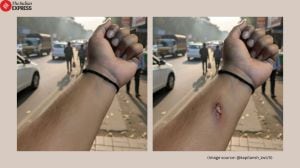I still feel a connection to that 17-year-old writer
The Room on the Roof was published in 1956,though I had written it by 1953. It took me two years to find a publisher.
I still feel a connection to that 17-year-old writer
Almost 60 years have passed since my first novel,The Room on the Roof. It was published in 1956,though I had written it by 1953. It took me two years to find a publisher.
I was a 17-year-old in England at the time,just out of school in India,and unable to afford college. In 1951,after I finished school in Shimla,I had been packed off to England by my mother and step-father. My first year was spent at an island called Jersey in the Channel Islands,where I had relatives. I took up odd jobs because I didnt have any money,working first with a travel agency and then with the public health department. Both were horribly dull jobs. At the travel agency I worked for (a Thomas Cook branch),my boss often left the office in my charge to meet the man she was having an affair with. There would be calls from the head office,instructing me to book so-and-so in rooms with double beds and twin beds. Till today,I get confused between the two,and at the time,I ended up putting people who had no intention of sleeping together on one bed,and separating those who wanted to be together! Obviously,my boss and I were soon sacked.
I realised soon I wasnt going to get anywhere on this island,and so I went to London,and took up a job as an accounts clerk. The most horrible thing in the world,because I had never passed in maths,and there I had to sit and dock up accounts. But Id come back from my office,to the bed-sitting room I had rented and write.
It was a lonely time. I hadnt realised I would be,but I was very homesick for India,for friends and familiars,and all the nostalgia that came with it. It all came pouring out in the form of this novel. It was based largely on a journal I had kept in my last year in India,and I found myself working on it and expanding it. Even in school,I had been certain that I would be a writer some day.
I showed the draft of the journal to two or three publishers,who were not interested. It was Diana Athill,who went on to become a famous editor,who suggested that I turn it into a novel,which I did. But the first draft,though promising,needed work. So I did it again,and it was accepted. It was the firm of Andre Deutsch,a fairly new publisher then,who took me on. It later published authors like Jack Kerouac and VS Naipaul.
In those days,you got an advance of 50 pounds for a book. With 40 pounds,I could come back to India,that was the fare by sea,and so I did. The book got published after I returned. It didnt see any big launch or any of the ballyhoo that you see now,but it was serialised in the Illustrated Weekly of India. It got good reviews,but didnt sell much. In fact,it sells more now. It picked up the John Llewellyn Rhys prize,which also had a cash prize of 50 pounds. Everything was 50 pounds then; in India the payment was 50 rupees.
Writing the book was a way for me to realise that I had to return to India. I have been more detached in my later writing. But with The Room on the Roof,I was very emotional. Writing it was intense,as were the feelings I had for the people I wrote about. Some characters were based on real people,others were my creations. A lot of my subsequent writing has been like it partly autobiographical,stories woven around people and places I knew. I have a lot of affection for my first book. I have never attempted to change a word in it. There might be bits where the writing is awkward. But it reflects me as I was then,
a 17-year-old. It was a novel about adolescence,written by an adolescent.
The Room on the Roof started me on a writing career that has lasted this long. When I came back,I started freelancing from a room in Dehradun,bombarding newspapers and magazines with stories and articles (we didnt have many publishers in India at the time). I made a few hundred rupees a month for 2-3 years (you could live decently then without luxuries on Rs 300-400 a month). It was a struggle,but I felt I was making a living doing what I enjoy doing. Thats the way I feel today. I still enjoy writing,still do a couple of pages every day.
Sixty years on,I still feel a connection to that 17-year-old writer,and to those early years of freelancing. I wrote a piece on that time,Living Without Money. It was fun most of the time,though it wasnt easy. But I was good at managing my life,at selling my work,finding publishers,without getting disheartened quickly. So in some ways,I have been fortunate.
(As told to Amrita Dutta)



- 01
- 02
- 03
- 04
- 05




























